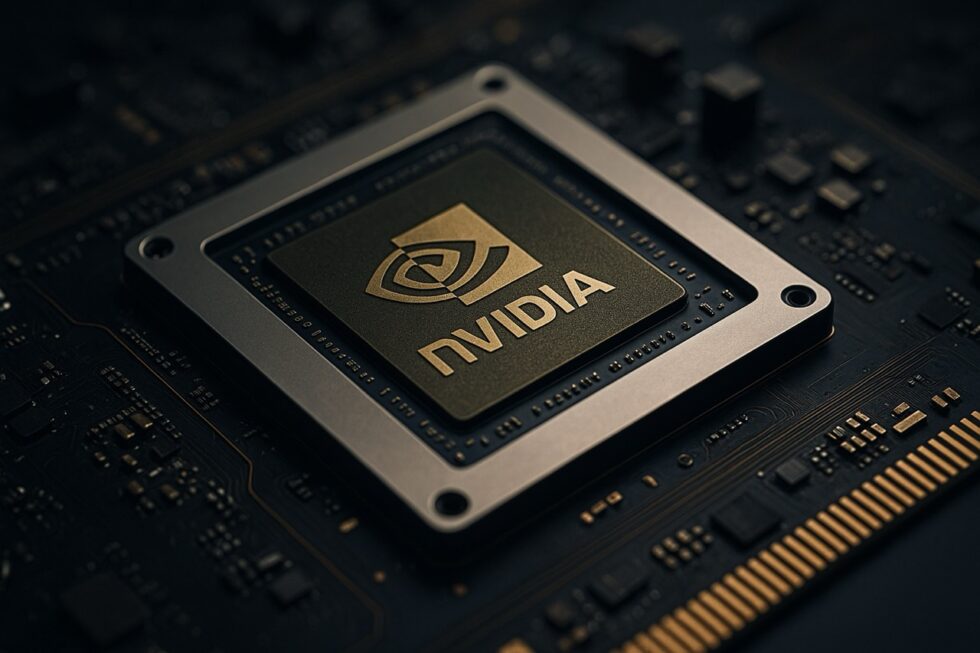Nvidia sets fresh sales record, but shares slip on AI bubble fears and Trump’s trade wars

Nvidia reported a record revenue of $46.74 billion in the second quarter, slightly exceeding analysts’ expectations.Earnings per share came in at $1.08, also above the forecast of $1.01. Despite these strong figures, the stock fell 2.3 percent in after-hours trading, as investors had been expecting a bigger upside surprise. The crucial data center segment came in at $41.1 billion, just below market estimates of $41.3 billion. Analysts view the results as a litmus test for the global AI rally that has fueled the technology sector in recent quarters. Pressure remains on the China business, as sales of the H20 chips were completely halted due to export restrictions. For the third quarter, Nvidia forecasts revenues of $54 billion and also announced additional share buybacks worth $60 billion. G.business reports this with reference to The WP Times.
Strong results, but not enough
Nvidia’s headline numbers would be considered spectacular for most companies, with revenue up 56 percent year-on-year and net profit rising 59 percent to $26.4 billion. However, the company is valued at perfection: its share price has climbed more than 1,100 percent since late 2022, making Nvidia the world’s most valuable listed company with a market capitalization of more than $4 trillion in July. Against this backdrop, even record-breaking growth was not sufficient to sustain momentum.
“Coming off a rally to all-time highs, being merely on the mark in terms of revenue simply wouldn’t cut it for Nvidia this time around,” said Thomas Monteiro, senior analyst at Investing.com. “The stock was priced for another massive beat.”
China business under heavy pressure
The company’s outlook is clouded by geopolitics. Earlier this year, the Trump administration blocked sales of Nvidia’s H20 AI chip to China. Designed specifically to comply with earlier restrictions, the product was nonetheless caught by tighter rules, costing Nvidia an estimated $8 billion in lost revenue for the quarter. In August, the company reached an unprecedented agreement with Washington: Nvidia and rival AMD must pay the US government a 15 percent cut of all H20 sales to China in exchange for export licenses.
Yet Beijing has raised its own concerns, warning about potential security risks and accelerating efforts to develop domestic alternatives. For now, Nvidia has excluded any China shipments from its revenue guidance. “Without the much-needed push from H20 sales in China, Nvidia simply cannot sustain the type of growth priced into its valuation,” Monteiro warned.
New generation: Blackwell and beyond
Chief executive Jensen Huang stressed that Nvidia’s latest AI superchip, the Blackwell platform, is “ramping at full speed” and that demand remains “extraordinary.” Blackwell is designed to be the backbone of AI infrastructure in the years ahead, and analysts widely regard it as the company’s most important product launch since the A100.
To bolster confidence, Nvidia’s board approved an additional $60 billion in share buybacks, one of the largest capital return programs in stock market history, on top of $24.3 billion already returned to shareholders through dividends and buybacks in the first half of the year.
Investor sentiment split
The results come just a week after a broad sell-off in AI-related stocks, triggered by growing doubts over whether the multitrillion-dollar investments in artificial intelligence can deliver returns at the pace investors expect. OpenAI CEO Sam Altman recently warned of a potential “AI bubble,” while researchers at MIT found that many companies are still struggling to monetize AI applications.
Still, some analysts remain bullish. “We are still in the early innings of the AI revolution,” said Dan Ives, analyst at Wedbush Securities. “As Microsoft, Amazon, Meta and Alphabet continue to pour billions into AI infrastructure, Nvidia remains the central player.”
Market-wide implications
Because Nvidia accounts for more than 8 percent of the S&P 500 and is heavily weighted in ETFs that track the global equity market, its performance has an outsized influence. Bloomberg data showed that options markets had priced in potential swings of up to 6.1 percent in either direction around the results, equivalent to $270 billion in market capitalization — more than 95 percent of S&P 500 companies are worth in total.
Indeed, Wednesday’s broader market reflected the wait-and-see mood. The S&P 500 closed at a record 6,481 points (+0.3%), the Dow Jones Industrial Average rose 0.32% to 45,565 points, and the Nasdaq Composite gained 0.17%. In Europe, the DAX fell 0.44% to 24,046 points.
Nvidia’s results highlight both the strength and the fragility of the current AI boom. The company is generating unprecedented profits and demand for its chips shows no signs of slowing, yet investor confidence wavers as soon as growth is anything less than spectacular. With Trump’s shifting trade policy and China’s push for technological sovereignty, Nvidia faces not just financial but geopolitical challenges. Whether the company can maintain its dominance may determine not only its own future, but also the trajectory of the global AI economy.
Stay connected for news that works — timely, factual, and free from opinion — and insights that matter now: PayPal: German banks temporarily blocked billions in payments after system failure